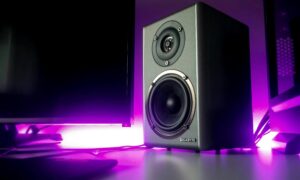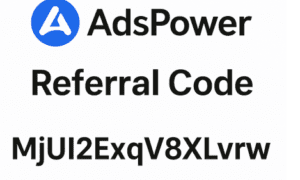3592 tape series offers a high-capacity, scalable data storage solution built for long-term reliability. But choosing the right cartridge format requires more than just glancing at specs. Generational improvements, reformatting capabilities, and compatibility between drives and media add layers of technical nuance. Whether you’re expanding an archive or maintaining compliance through WORM media, a clear understanding of these distinctions can improve both performance and cost-efficiency. This guide strips away jargon and outlines exactly what sets each tape type apart—from standard to economy, from generation JA to JF — so you can make informed decisions without guesswork.
Understanding 3592 Tape Capacity and Formats
The 3592 tape format features a sophisticated system of cartridge types and capacities that needs careful understanding, deploying effectively. Each generation of this format brings improvements in storage density and performance. Understanding these options helps you get the most from your backup investment.
Standard VS Extended VS Advanced Types
IBM 3592 tape media features several distinct types. A two-letter code identifies each type’s generation and capabilities: Standard (JA) cartridges mark the first generation. They provide 300GB native capacity with original 3592 J1A drives. Users can reformat this cartridge to achieve 500GB with TS1120 drives and 640GB with TS1130 drives. This reformatting capability sets the 3592 format apart from other tape technologies.
Extended (JB) cartridges launched the second generation with 825m tape length compared to 610m in standard cartridges. They deliver 700GB native capacity with TS1120 drives, 1TB with TS1130 drives, and support reformatting to 1.6TB with TS1140 drives. The extended format strikes a balance between capacity and access times.
Advanced cartridges mark the third generation and beyond, with significant increases in storage density:
- Type C (JC): 4TB native with TS1140 drives, upgradable to 7TB with TS1150
- Type D (JD): 10TB native with TS1150, upgradable to 15TB with newer drives
- Type E (JE): 20TB native capacity with the newest drives
Type F (JF) cartridges have emerged with an impressive 50TB native capacity with TS1170 drives. These cartridges stand as the highest capacity tape media available today.
Short VS Full-Length Cartridges
Organizations that value access speed over maximum capacity can choose IBM’s economy versions of each cartridge generation. These shorter cartridges provide faster data access because they have less tape to scan through.
Economy cartridges maintain the same generational pattern:
- First generation economy (JJ): 246m length delivers 60GB native capacity with 3592 J1A drives, upgradable to 100GB with TS1120 and 128GB with TS1130
- Advanced Type C economy (JK): 146m length yields 500GB with TS1140 drives
- Advanced Type D economy (JL): 281m length provides 2-3TB depending on drive generation
- Advanced Type E economy (JM): 320m length supports 5TB capacity
These economy cartridges cost less than full-length versions. Applications that need frequent file retrieval benefit significantly from these shorter cartridges’ performance advantages.
WORM and Economy Options
Write Once Read Many (WORM) versions exist for almost every cartridge type. A different second letter code identifies them, along with platinum (silvery gray) cases that contrast with black cases used for standard rewritable media. WORM cartridges include:
- JW (Standard WORM): 300-640GB depending on drive generation
- JX (Extended WORM): 700GB-1.6TB depending on drive generation
- JY (Advanced Type C WORM): 4-7TB depending on drive generation
- JZ (Advanced Type D WORM): 10-15TB depending on drive generation
- JV (Advanced Type E WORM): 20TB
Factory formatting establishes WORM cartridges’ status permanently. They support data appending but prevent overwriting completely, making them perfect for compliance requirements.
IBM’s color-coding system makes cartridge identification straightforward. Each generation and format shows distinctive colors on the label, door, and write-protect switch. JA cartridges display dark blue elements, JB show dark green, and JC feature dark purple, enabling quick visual identification in tape libraries.
The 3592 tape cartridges achieve a typical 3:1 compression ratio in mainframe environments. This compression can triple the effective capacity, allowing an Advanced Type E (JE) cartridge to store up to 60TB of data under optimal conditions.
Backward Compatibility And Media Reuse
IBM 3592 tape technology stands out because it works with older versions. Many storage solutions force you to replace all media with each new generation. The 3592 ecosystem takes a different approach to help you get more life from your tape investments.
Reformatting Older Cartridges
The 3592 data tape media is special because it knows how to reformat existing cartridges for higher capacities with newer drives. This feature, called “Media Reuse,” helps organizations get the most value from media they already own.
New generation tape drives can reformat older cartridges to match the latest technology’s performance and capacity. The physical tape coating limits how much you can store, but reformatting gives you more storage space by using tracks better.
The technical process is interesting. Reformatting only increases track density because the linear bit density depends on the physical tape coating. A JA cartridge that started with 300GB native capacity can store 640GB when used with a TS1130 drive. You get double the space without buying new media.
Cross-Generation Read/Write Support
Most 3592 cartridges can read and write data across three drive generations. This flexibility helps a lot during technology changes. Yes, it is possible to run a tape library with different generations of media and drives at the same time.
Each media type works with different generations in specific ways:
- First-generation JA cartridges work in native mode in both J1A drives and E05 drives operating in either native or J1A emulation mode
- JB cartridges can store 700GB with TS1120 drives, 1TB with TS1130 drives, and up to 1.6TB with TS1140 drives
- JC cartridges can still be read by newer drives, but writing might be limited based on the drive generation
Your tape library should have at least two drives that can read and write each type of media you use. This keeps everything running even if a drive needs maintenance or fails.
Investment Protection Through Reuse
Media reuse saves money. Companies can increase their tape library capacity by up to 1200% depending on their drives and media. You only need to upgrade drives, not buy new media.
The numbers are impressive. Upgrading tape libraries without replacing media can boost capacity by up to 60%. This helps protect your investment as data keeps growing fast. You also spend less time managing storage because fewer cartridges hold the same amount of data.
The 3592 format’s reuse feature means you replace media less often than with other tape standards. This saves money over time. Other formats usually need all new media with each drive generation.
The 3592 media reuse feature lets you protect your investment in two ways. You can grow your archives by upgrading drives while keeping your existing media. Few storage technologies give you this much value across multiple generations.
Conclusion
3592 tape platform supports a wide range of storage needs through flexible media formats and forward-compatible drive options. It’s a keeper in the business world because it can update old cartridges, works with different generations of tech, and handles special write-once-read-many (WORM) types. By understanding the distinctions among cartridge types—capacity, generation, format length, and use case—you gain a significant edge in optimizing tape storage. The 3592 line isn’t just a tape system; it’s a long-term strategy. Extend the life of your media, cut upgrade costs, and easily handle growing data needs. You can do it all without a total system rebuild.





























